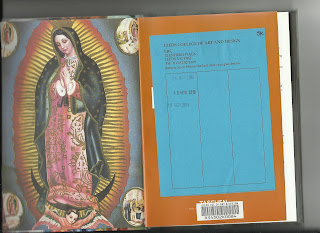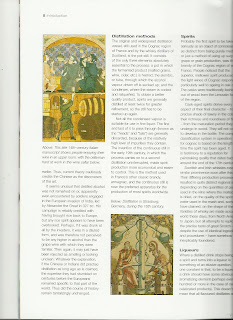In my initial research of Mexican cuisine I kept coming across the fact that a lot of Mexicas food has been influenced by Aztec living.
Of the various crops grown by the Aztecs, maize
was the most important. Aztec diets centered on it. Maize was grown
across the entire empire, in the highland terraces, valley farms and
also on the chinampas. Women ground maize into a coarse meal by rubbing it with a grinding stone called a mano against a flat stone called a metate. The Aztecs made tortillas from the corn meal. Other crops that the Aztecs relied upon were avocados, beans, squashes, sweet potatoes, tomatoes, chia, amaranth and chilies. These crops were also grown everywhere. Crops that were specific to the lowland regions were cotton, fruits, cacao beans and rubber trees.
Key ingredients such as maize are used in a lot of dishes, tortillas being a main aspect in a lot of meals (using said ingredient). So, from this I thought it would be interesting to go moreso in the direction of linking present day Mexican cuisine to past- Aztec food. And from this I looked at numerous books to try and strengthen the connection between the two. Unfortunately there is little information that link the two together. However, researching the Aztec culture so thoroughly influenced my thought process- I essentially changed my good.
'Good is...' Aztec imagery.
Whilst looking through books, trawling through web pages, I found I was most interested in the Aztec imagery and the meaning behind the visuals. It was such a huge part of their culture, and I felt the imagery could be modified and manipulated into something fitting to this project.
Aztec (Aztecatl) is the Nahuatl word for "people from Aztlan", a mythological place for the Nahuatl-speaking culture of the time, and later adopted as the word to define the Mexica[nb 1] Often the term "Aztec" refers exclusively to the Mexica people of Tenochtitlan people. http://en.wikipedia.org/wiki/Aztec
During the twelfth century AD the Mexica were a small and obscure tribe searching for a new homeland. Eventually they settled in the Valley of Mexico and founded their capital, Tenochtitlan, in 1345. At the beginning of the sixteenth century it was one of the largest cities in the world.
Warfare was extremely important for the Mexica people and led them to conquer most of modern-day central and southern Mexico. They controlled their huge empire through military strength, a long-distance trading network and the tribute which conquered peoples had to pay.
Stone sculpture in the British Museum collection reflects the Mexica's complex religious beliefs and the large pantheon of gods they worshipped. Their sophisticated ritual calendar reflected the rhythms of the agricultural year and their ceramic sculptures are noted for their visual impact. Musical instruments such as drums were decorated with intricate carvings, probably because of the importance of music during Mexica rituals.
Craftsmen also worked in gold, turquoise mosaic and feathers. Most pieces were destroyed by the Spanish invaders, but the Museum holds a number of turquoise mosaics, the most beautiful of which were produced by Mixtec craftsmen and sent to the Mexica as tribute.
Hernán Cortés and his small Spanish army arrived in 1519 and overthrew the Mexica ruler Moctezuma Xocoyotzin with relative ease. This was partly due to the latter's weakness, as well as the Spaniards' superior weaponry, their unfamiliar battle tactics and the devastation of the Mexica population by European disease. Mexico remained under Spanish rule until gaining independence in AD 1821.
*The people and culture we know as 'Aztec' referred to themselves as the Mexica
(pronounced 'Mé-shee-ka').
There is clear distinction between the two. I think that Mexica's imagery is much more menacing and sinister. It is bold and powerful, with a rich range of colour much like Mexico's imagery but with a darker edge to it, I plan on capitalising on this aspect within my project.
AZTEC MYTHOLOGY.
Moctezuma.
'But don't be deceived into thinking that he was merely a playful show-off. His full name, Moctezuma Xocoyotzin, means "Angry Lord". Despite his love of gold bracelets and anklets festooned with dangling bells, he was a battle-hardened killer. Nor did he spare himself physical pain. Next to his outrageous portrait, painted by Antonio Rodriguez in the late 1680s, we find an ominous stone casket which may have contained the instruments Moctezuma employed to draw his own blood as a sacrifice to the gods.'
Gods:
'The Aztects People of the Sun'
Alfonso Caso.
Gods and worship played a huge part in aztec culture and brought about much of the imagery we associate with them today.
| Home of the Aztec gods and goddesses. | |
| She represents the pain of life, has a serpent skirt (poverty), claws and heart necklace (pain of life). | |
| God of magic, war and death. Has missing foot which was eaten by the earth monster as he dragged the earth from the waters before man was created. He's called 'smoking mirror' or the dark side of life. | |
 | God of spring and new life and the god of suffering. He wore a human skin. At his festival a prisoner was skinned alive and the skin was worn by priests to show new life bursting from the old. click your type of computer. |
| Prince of flowers, god of dawn, dance and love. Shown as eternity. | |
| God of fire. Shown as a toothless old man. | |
| Lord of everywhere, the one supreme force, both male and female. | |
 | God of knowledge, creation, priesthood, and wind. click your type of computer. |
| Goddess of the hearth. | |
 | God of rain. Recognized by his fangs and eye rings. Thought to be half human and half alligator. click your type of computer. |
Mictlantecuhtl | God of the dead. Those who died of natural causes went to live with this god. On the way to him their skin was ripped off by a wind of knives; then they lived as skeletons. click your type of computer. |
 | Goddess of the lakes and streams. click your type of computer. |
| Goddess of maize. | |
| God of fate and creation. | |
Huitzilopochtli | God of war, sun, and the nation. Shown holding a fire-breathing serpent and a shield. |
Aztec Calendar
The Aztec calendar is the calendar system that was used by the Aztecs as well as other Pre-Columbian peoples of central Mexico. It is one of the Mesoamerican calendars, sharing the basic structure of calendars from throughout ancient Mesoamerica.
The calendar consisted of a 365-day calendar cycle called xiuhpohualli (year count) and a 260-day ritual cycle called tonalpohualli (day count). These two cycles together formed a 52-year "century," sometimes called the "calendar round". The xiuhpohualli is considered to be the agricultural calendar, since it is based on the sun, and the tonalpohualli is considered to be the sacred calendar.
The calendric year may have begun at some point in the distant past with the first appearance of the Pleiades (Tianquiztli) asterism in the east immediately before the dawn light. [1] (Seeheliacal rising.) But due to the precession of the Earth's axis, it fell out of favor to a more constant reference point such as a solstice or equinox. Early Spanish chroniclers recorded it being celebrated in proximity with the Spring equinox.
Day signs
The set of day signs used in central Mexico is identical to that used by Mixtecs, and to a lesser degree similar to those of other Mesoamerican calendars. Each of the day signs also bears an association with one of the four cardinal directions.[verification needed]
There is some variation in the way the day signs were drawn or carved. Those here were taken from the Codex Magliabechiano.
|
|
Here I have entered my birthday and it had been broken down into how the Aztec would have read this day from their day signs within the calendar. It is interesting to see the imagery used, but with meaning behind it also.
Interesting to think about when creating my concept.
All of the Gods played a different role in their culture, and were taken extremely seriously. An interesting and informative angle to come from when thinking about a concept for my project. If I want people to learn something about Aztec imagery then focusing on a personality of these powerful Gods could work well.
From looking into Aztec imagery I have essentially abandoned all ties with Mexican cuisine and adopted a new approach to the brief












































No comments:
Post a Comment